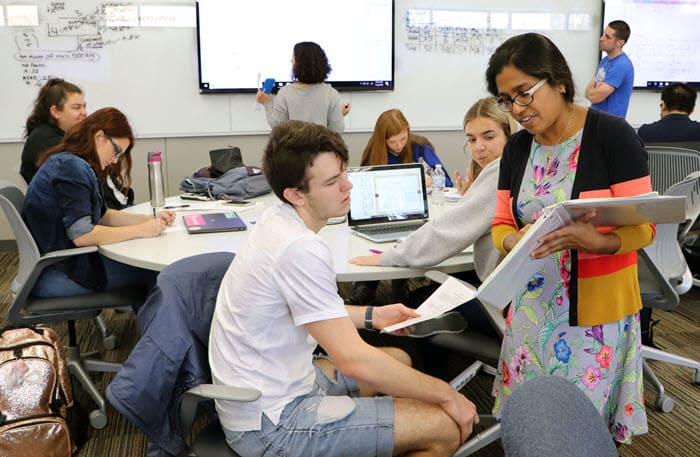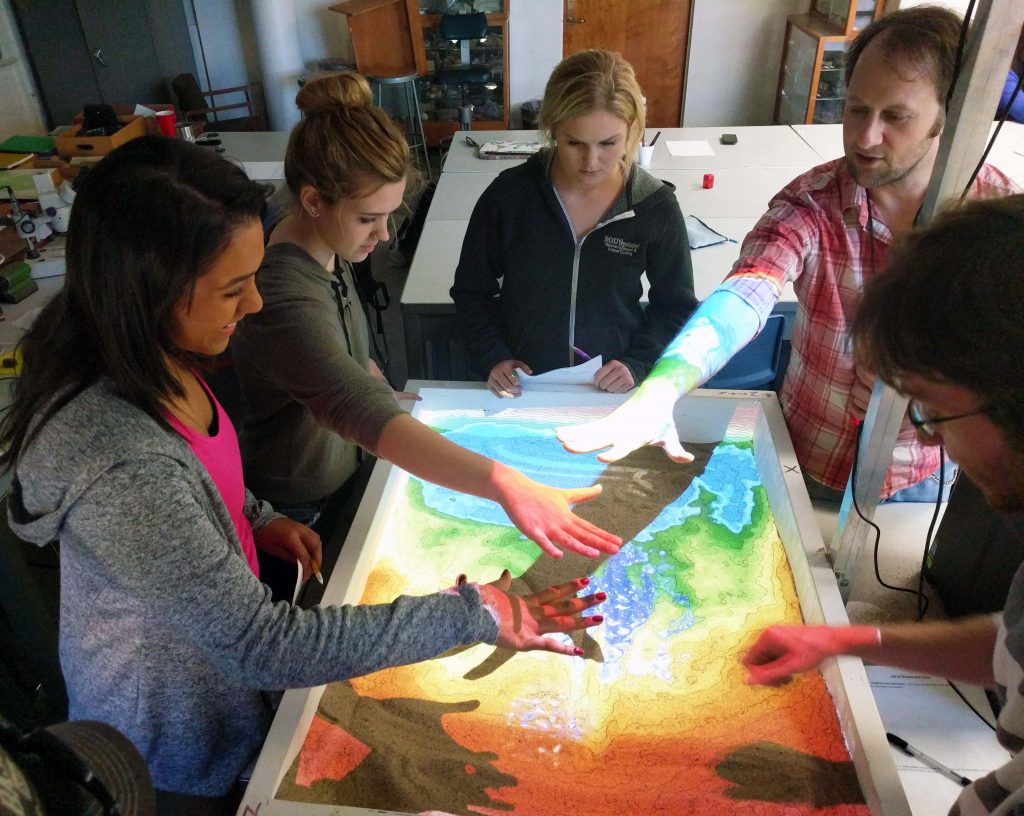By Doug Ward
Higher education has many stories to tell.
Finding the right story has been difficult, though, as public colleges and universities have struggled with decreased funding, increasing competition for students, criticism about rising tuition, skepticism from employers and politicians about the relevance of courses and degrees, and even claims that the internet has made college irrelevant.

One top of that, students increasingly see higher education as transactional. Colleges and universities have long lived on a promise that time, effort and learning will propel students to a better life and the nation to a more capable citizenry. Today, though, students and their parents talk about return on investment. They want to know what they are getting for their money, what sort of job awaits and at what salary.
All of this has put higher education on the defensive, searching for a narrative for many different audiences. The Association of American Colleges and Universities has focused its last two annual meetings on telling the story of higher education. I led a workshop and later a webinar on that topic, and participants were eager to learn from each other about strategies for making a case for higher education. At one of this year’s sessions, a workshop leader asked participants whether their universities were telling the story of education well.
No one raised a hand.
All too often, universities use their color brochures and websites to explain how prestigious they are and to sell students on an ivory tower fantasy. Both of those things have a place. By focusing on education as a product, though, they overlook what college is really about: challenges, disappointments, maturity, opportunity, growth, and, above all, learning.

Teaching and learning rarely make their way into the stories that universities tell. If they did, here are some of the things students would learn about:
- Kim Warren, associate professor of history, who has rethought the language she uses in her classes. In helping students think like historians, she treats everyone as English-language learners so that no one leaves class confused by terminology or expectations.
- Prajna Dhar, associate professor of engineering, who has made sure that students with disabilities can participate in the active learning at the heart of her classes.
- Mark Mort, who has transformed once-staid 100-level biology classes into vibrant hubs of activity where students help one another learn.
- John Kennedy, associate professor of political science, who draws upon his expertise in international relations to help students work through negotiation scenarios that diplomats and secretaries of state struggle with.
- Matt Smith, a GTA in geography, who has created an interactive sandbox that allows students to create terrain and use virtual rain to explore how water flows, collects and erodes.
- Genelle Belmas, associate professor of journalism, who has created a “whack-a-judge” game to help students learn about media law and a gamification class that helps them learn about things like audience, interactivity, and creativity.
- Phil Drake, associate professor of English, who uses peer evaluation to help students improve their writing and to gain practice at giving feedback.
- M’Balia Thomas, assistant professor of education, who uses Harry Potter books to demonstrate to TESOL and ELL teachers how they can use students’ existing knowledge to motivate them and to learn new material.
- Ward Lyles, assistant professor of urban planning, who passionately embraces team-based learning and who helps students learn to approach statistics with diversity, equity and inclusion in mind.

- Lisa Sharpe Elles, assistant teaching professor in chemistry, who has increased the use of open-ended questions in large chemistry classes by using artificial intelligence for grading.
- Sarah Gross, assistant professor of visual art, who uses self-assessment as a means for students to improve their pottery skills and to learn from peers.
I could go on and on. The stories of innovative techniques and inspirational approaches to teaching and learning at KU seem limitless. All too often, though, they go untold. That’s a shame because they are perhaps the most important stories that students and prospective students need to hear as they make decisions about college and college classes.
The stories we tell remind us of who we are and where we are going. One of our roles at CTE is to tell the stories of the inspiring teachers who form the heart of learning at KU. Another is to bring those teachers together in ways that allow them to inspire and learn from one another.
Great teaching is crucial to the future of higher education. It takes time, creativity, and passion. It is important intellectual work that deserves to be celebrated and rewarded.
That’s a story worth telling.